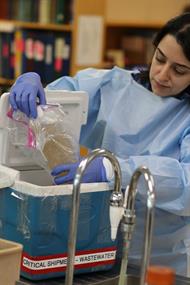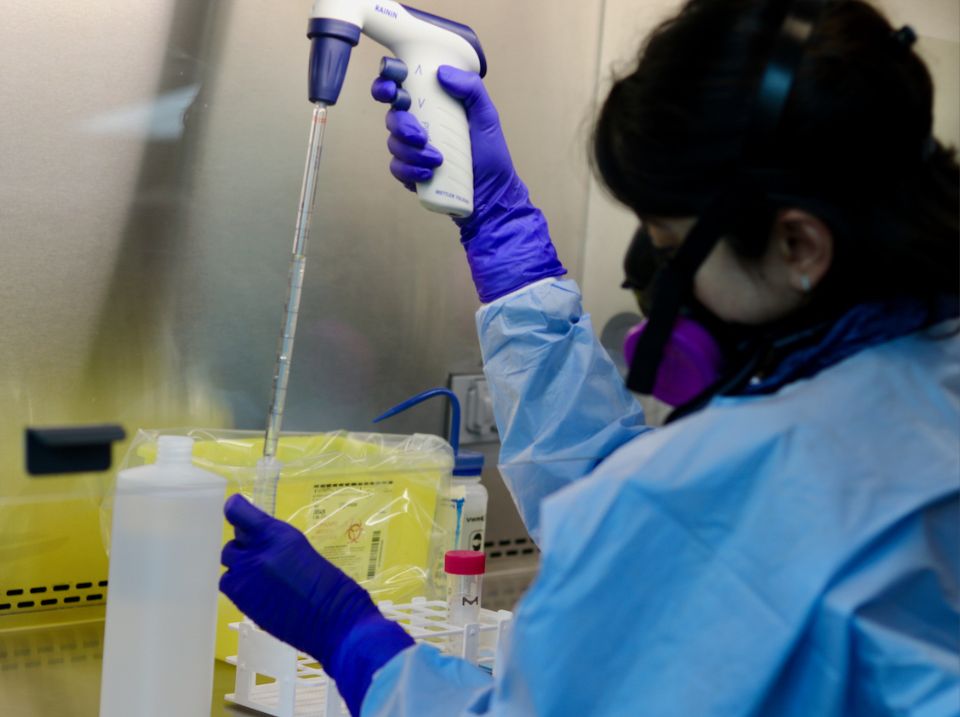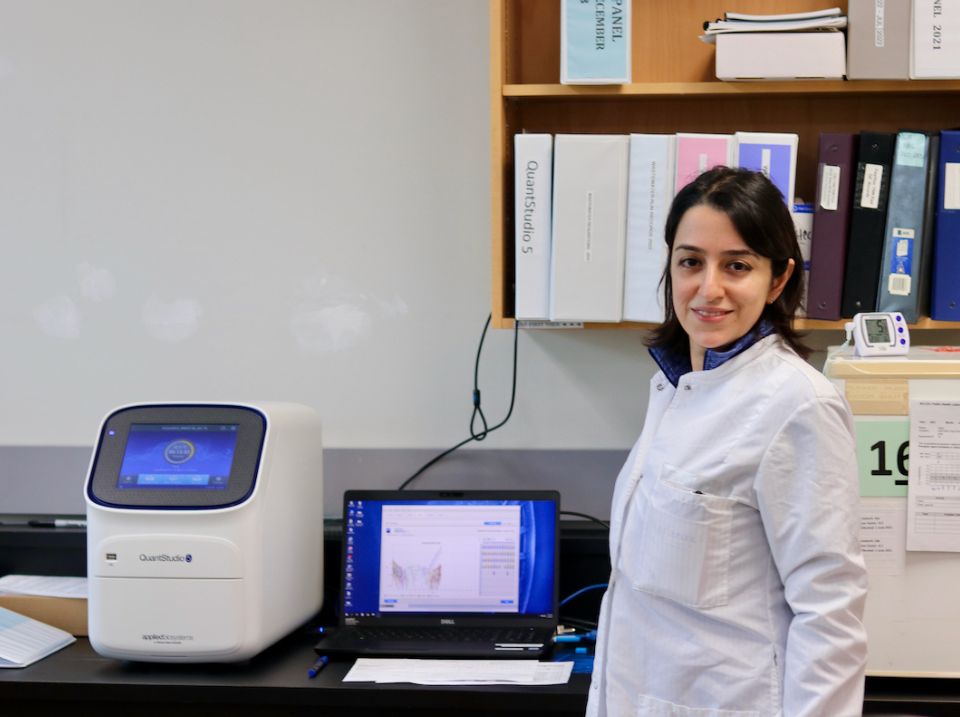Testing community wastewater provides information about the health of a community.
Testing community wastewater provides information about the health of a community. There are many ways to get information on a person’s health; for example, when someone is unwell, a doctor may ask them to collect a sample of their poop (called a stool sample). Poop or stool can provide a lot of information as it can contain some infectious pathogens, medications, or drugs.
Testing the community’s wastewater (water from toilets and sinks in households and businesses) for bacteria and viruses can provide a lot of information about the health of a community.
People with respiratory viruses such as COVID-19, influenza, and respiratory syncytial virus (RSV) shed these viruses in their stool, whether they have symptoms or not. Samples of untreated community wastewater can be collected and tested for these viruses in the BCCDC Public Health Laboratory using PCR testing. Multiple results collected over a period of time provide useful information about whether cases of these viruses are increasing or decreasing in a community.
Because people with respiratory viruses can shed them even if they do not have symptoms, wastewater monitoring can provide an early warning if these viruses are increasing in a community. Other benefits of wastewater testing include:

- Provides information on respiratory viruses in communities where testing or access to healthcare is not readily available
- Is less invasive and cheaper than community-wide testing
- Provides unbiased and consistent population-level data on the COVID-19 incidence which can help inform the appropriate public health responses.
Photo: Michael Donoghue
Samples collected from wastewater treatment plants (WWTP) in urban regions across the province are sent to the BC Centre for Disease Control for testing.
Samples are collected two to three times per week. The BCCDC Public Health Laboratory tests the samples and shares SARS-CoV-2, influenza A, influenza B and RSV levels on the respiratory surveillance wastewater surveillance dashboard.
Wastewater Dashboard
- Annacis Island WWTP (covering Fraser North and South)
- Iona Island WWTP (covering Vancouver)
- Lions Gate WWTP (covering North Shore)
- Lulu Island WWTP (covering Richmond)
- Northwest Langley WWTP
- McLoughlin Point WWTP (covering Victoria)
- Comox Valley Water Pollution Control Centre
- Regional District of Nanaimo WWTP
- Kamloops Sewage Treatment Center
- City of Kelowna WWTP
- City of Penticton WWTP
- City of Prince George WWTP
Testing of wastewater can provide information on how levels of respiratory viruses are changing within an area over time. Since samples are collected from catchments that serve a large population, wastewater data cannot be used to identify which people in a community have these viruses. Also, due to individual differences in viral shedding, wastewater monitoring cannot determine how many people have these viruses or whether people have symptoms or not.
Important considerations when analyzing data:
- Surveillance data is most useful and reliable when studied over a longer period of time (for example, consistent increases in virus levels over several weeks tell us more than a single day increase).
- The daily viral load changes day-to-day therefore changes in virus levels are best observed as trends over time (we call this percentage % change).
- Each catchment has unique contribution sources (i.e. residential, industrial, commercial), and therefore, trends within each catchment should be evaluated individually.
- Wastewater data should be integrated with other surveillance systems to get an overall situational analysis.
 Photo: Michael Donoghue
Photo: Michael Donoghue - Use wastewater to distinguish between different variants of respiratory viruses including emerging and circulating variants of concern by sequencing.
- Research to develop ways to test wastewater for other viruses, bacteria and substances that are important to population health.
 Photo: Michael Donoghue
Photo: Michael Donoghue
